Imperial Citadel of Thang Long is a historical site of the ancient Thang Long citadel, starting from the pre-Thang Long period (7th century) through the Dinh – Tien Le dynasties, strongly developed under the Ly, Tran, Le and citadel. Hanoi under the Nguyen Dynasty. This is a massive architectural work, built by dynasties in many historical periods and has become the most important relic in the system of monuments of Vietnam. The Imperial Citadel of Thang Long has been recognized by UNESCO as a world cultural heritage. Here, let’s explore this historic site with VNtrip.vn.
1. Introduction of Imperial Citadel of Thang Long
Imperial Citadel of Thang Long now belongs to Dien Bien ward and Quan Thanh ward, Ba Dinh district, Hanoi. Thang Long Imperial Citadel relic has a total area of 18,395 ha, including archaeological sites of 18 Hoang Dieu and other relics left in the Hanoi Citadel such as Doan Mon, Hanoi flagpole, Kinh palace. Thien, D67 house, Bac Mon, Hau Lau, the wall and 8 palace gates under the Nguyen Dynasty.
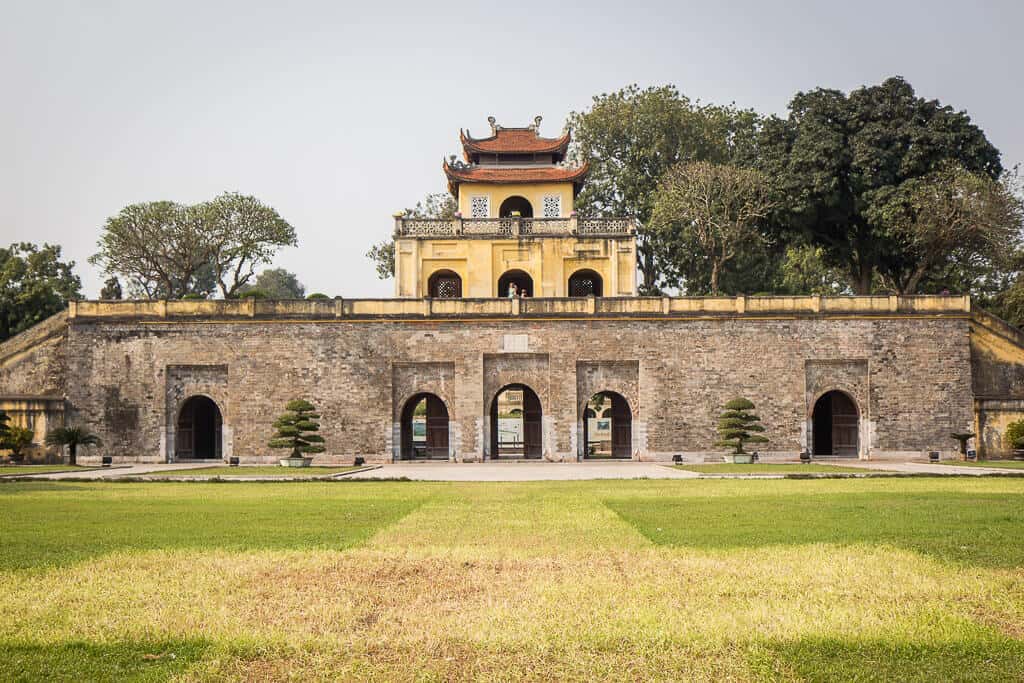
Imperial Citadel of Thang Long (photo collection)
These monuments are located in Ba Dinh district and are limited by the following roads: to the north is Phan Dinh Phung street, to the south is Bac Son street and the National Assembly building, to the southwest is Dien Bien Phu street, to the west is Hoang Dieu Street, Doc Lap Street, National Assembly House and finally in the East is Nguyen Tri Phuong Street. This is a place to visit that you definitely cannot miss when traveling to Hanoi.
2. How to get to Thang Long Imperial Citadel?
To visit Thang Long Imperial Citadel, you go to 19C Hoang Dieu which is the main gate for visitors. From the center of Hanoi, you can easily go to the Imperial Citadel by means of vehicles such as motorbikes, beautiful cars, cars, buses… If you take a bus, you can take route 22, this bus will stop at the parking spot in front of the Imperial Citadel.
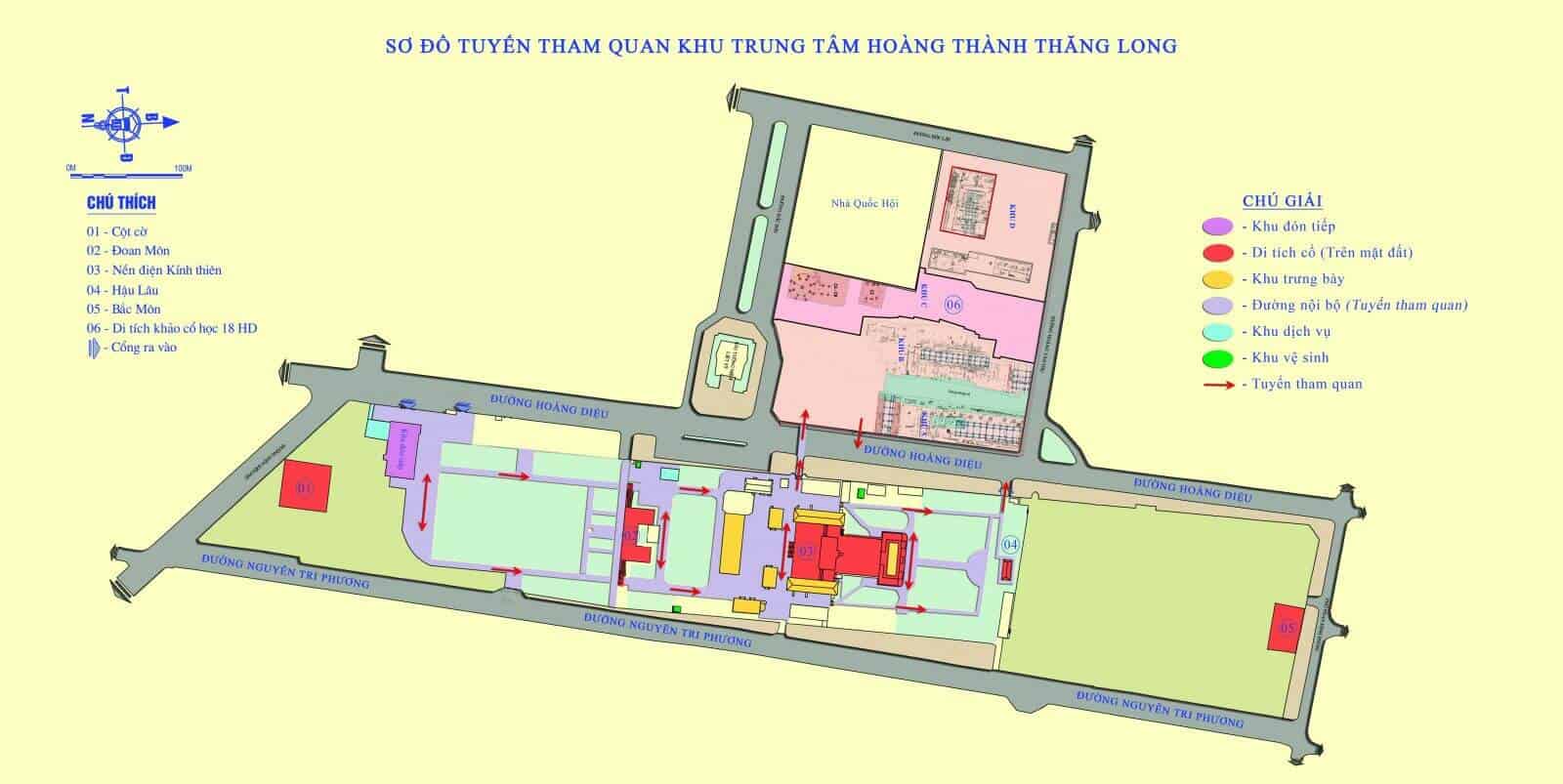
Route map to visit Imperial Citadel of Thang Long
3. Ticket prices and opening hours to visit the Imperial Citadel of Thang Long
– Imperial Citadel of Thang Long is open on weekdays (except Monday).
– Open time:
- Morning: 8:00 am – 11:30 am;
- Afternoon: 14h00 – 17h00
– Ticket price to enter the relic is: 30,000 VND / time
– For pupils, students aged 15 years and over (must have a student card), the elderly 60 years old or older, the entrance ticket price is: 15,000 VND / time
– For children under 15 years old and people with meritorious services to the revolution, the entrance ticket is completely free.
4. Places to visit in the Imperial Citadel of Thang Long
Archaeological Area 18 Hoang Dieu
This relic consists of the bottom floor is the eastern part of Dai La citadel under Cao Bien and Tang dynasties, the upper floor is the palaces of the Ly and Tran dynasties, followed by a central part of the eastern palaces of the Le and dynasties. the top is part of the 19th century Hanoi provincial citadel center.
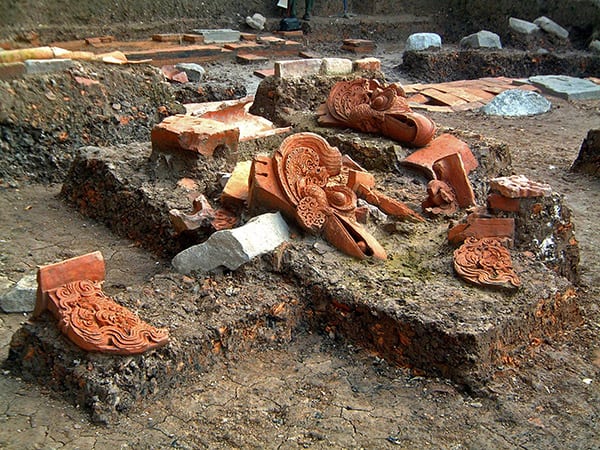
Archaeological relic at 18 Hoang Dieu (collected photos)
Hanoi flagpole
Hanoi flagpole is a relic built in 1812 under Gia Long dynasty. The flagpole is 60m high, including the base, the pole body and the watchtower. The base has a square shape with an area of 2007m² and includes 3 levels that gradually increase. Each level has a wall of flowers and patterns around it. From the ground to the foot of the 2nd level, you have to climb 18 stairs on the east and west sides. If you want to go from level 2 to level 3, you have to climb 18 stairs at the east and west doors. The third level has 4 gates, East gate, West gate, South gate and North gate.

Hanoi flagpole
Kinh Thien Palace
This is the central relic, the main nucleus in the overall historical sites of Hanoi’s ancient citadel. Kinh Thien Palace is located in the center of the relic site. In front of Kinh Thien Palace is Doan Mon, then to the Hanoi flagpole, behind is Hau Lau, Cua Bac, the east and west sides are surrounded by walls and open small doors.
Currently, the vestiges of Kinh Thien Palace are only the old foundation. The south side of the palace has a railing over one meter high. The front, south direction of Kinh Thien Palace built a system of steps up with large box stone slabs. The electric platform consists of 10 steps, 4 stone dragons are divided into 3 equal ways to form a dragon shelf.
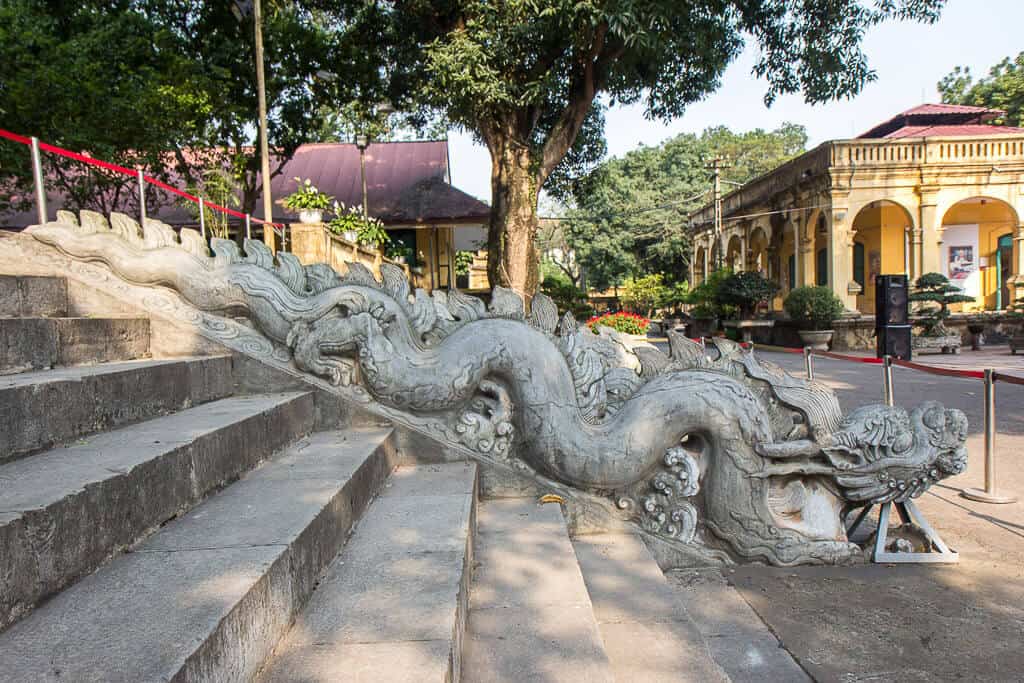
Stone dragon shelf at Kinh Thien Palace (collected photos)
Four stone dragons were created in the 15th century during the Le Dynasty. Kinh Thien Palace’s stone dragon sculpture is a masterpiece of architectural and artistic heritage, representing the sculpture art of the early Le Dynasty. The dragon is carved in blue stone, has a high head, a large head, round eyes, long horns with branches, a mane that curls back, a mouth open, and a pearl. The dragon’s body curves gently into many arcs, gradually decreasing towards the electric platform above. On the back of the dragon, there is a long undulating fin line like clouds and sparks. Two steps on either side of the shrine are two stylized dragons. The background of Kinh Thien Palace and the pair of adoring dragons partly reflect the grandeur, magnificence and magnificence of the ancient Kinh Thien Palace.
Later Lou
Also known as Tinh Bac Lau (Tinh Bac Lau) is a building built behind the architectural cluster of Kinh Thien Palace, which is the palace of Hanoi’s ancient citadel. Although it is behind the palace, it is in the north, built with the intention of feng shui to keep the peace in the north of the palace. This was also the residence of the queen and princesses during the feudal period.
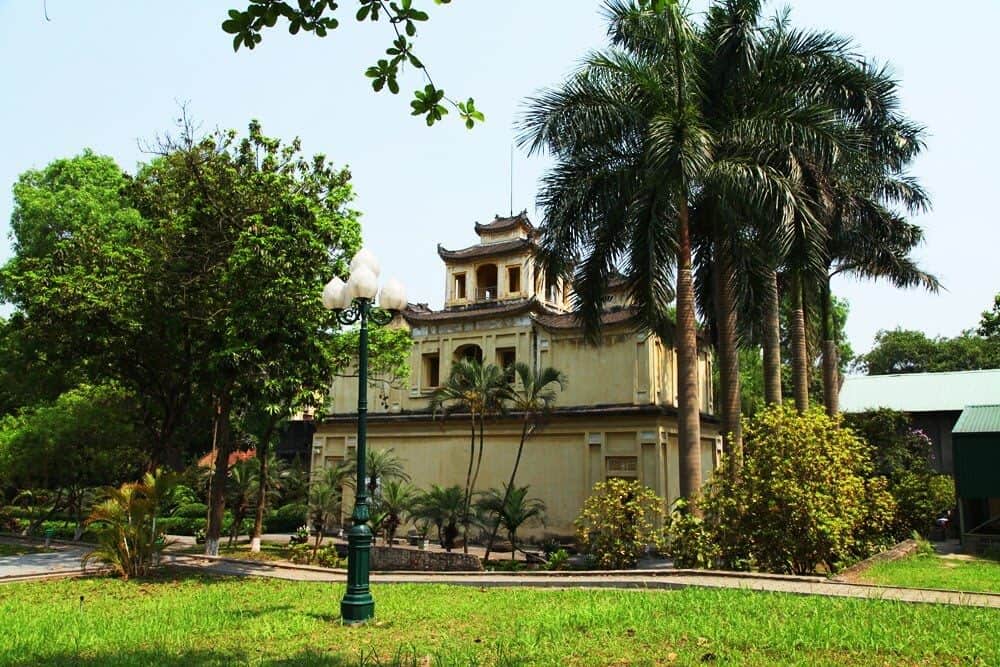
Hau Lau (photo collection)
North Gate
This is one of the five gates of Hanoi citadel under the Nguyen Dynasty. At Cua Bac, there are still two cannon marks shot by French cannons fired from the Red River in 1882 when the French took down Hanoi for the second time. Today on the gate of the city is the place to worship two governors of Hanoi, Nguyen Tri Phuong and Hoang Dieu.
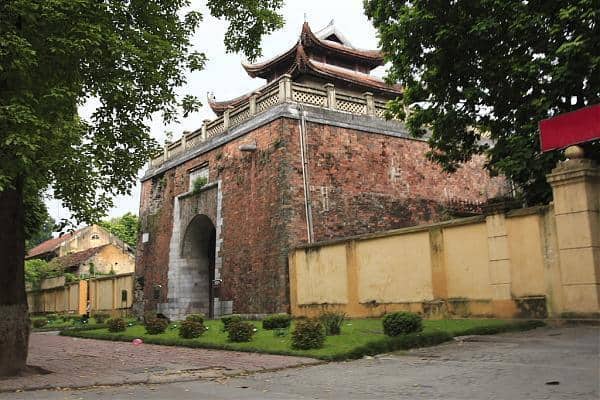
North Gate (photo collection)
House D67
This is where the Ministry of National Defense, the Politburo and the Central Military Commission made historic decisions marking the milestones of the Vietnamese revolution. Those were the Tet Offensive in 1968, 1972 and the culmination of that was the 1975 Ho Chi Minh campaign to liberate the South and reunify the country.
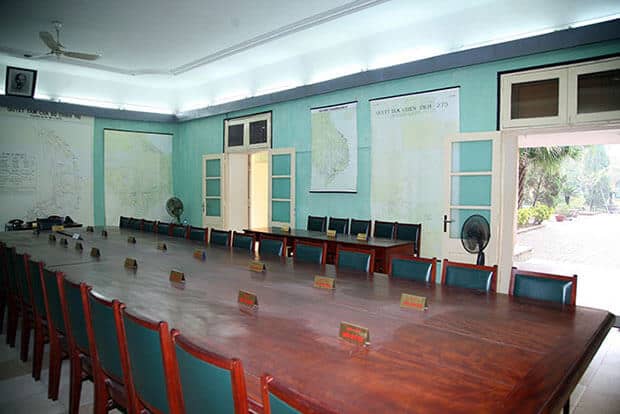
House D67 (photo collection)
Do not miss the opportunity to visit the Imperial Citadel of Thang Long to understand more about the history of the cultural capital if you have the opportunity to travel to Hanoi.
Source: Collected internet.